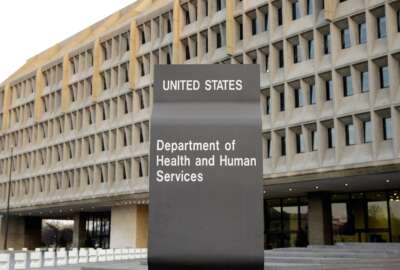Hubbard Radio Washington DC, LLC. All rights reserved. This website is not intended for users located within the European Economic Area.
IT reforms moving to optimization stage
Nine months since OMB issued its 25-point plan to improve how agencies oversee technology, the tone is changing. Lisa Schlosser, the federal deputy CIO, said th...
wfedstaff | June 4, 2015 12:01 pm
Agencies will begin to hear a different tone from the White House when it comes to reforming the way agencies buy and use information technology.
There will be less talk about consolidation and more about optimization.
“I think you will see a shift from us describing data center consolidation. The goal of that is not just to shut down data centers,” said Lisa Schlosser, the Office of Management and Budget’s deputy administrator for e-government and IT. “It’s to optimize the use of resources-hardware, software, people, energy. So it’s about optimization. It’s not about just shutting down.”
Schlosser, who spoke Thursday at a panel discussion sponsored by the AFCEA Bethesda, Md. Chapter, said the change isn’t dramatic and it’s not about issuing new policy, but more a part of the evolution of the 25-point IT reform effort.
At the start of the initiative, OMB talked a lot about shutting down data centers, with a goal of closing 800 by 2015.
But Schlosser said while agencies still must close these facilities — which grew from 432 in 1998 to 2,094 in 2010 — OMB wants to turn the conversation about achieving more full usage and reducing resources.
CXO collaboration is expected
This is also why Schlosser said agency chief information officers need to collaborate more now than ever with the CXO community, including CFOs, chief acquisition officers, chief human capital officers and the deputy secretaries to have a coordinated plan for technology to spur innovation and meet business needs. In the past CIOs focused too much on running the servers and making the technology work, she said.
“A theme you will see through the IT reform plan is this idea that CIOs can’t alone solve everything in the organization,” Schlosser said. “There has to be tight CXO collaboration to really us optimize the use of technology for business.”
To that end, agencies have started to make progress on several of the 25 reform initiatives, especially those dealin with acquisition.
The Office of Federal Procurement Policy launched the mythbusters campaign to encourage agencies to talk to industry about contract requirements. And last week, OFPP issued a memo renaming the contracting officer technical representative to contracting officer representative and creating standard certification requirements for those employees.
The other area gaining traction is program and project management.
Program management mentoring
Ken Rogers, the director of the State Department’s IT strategic planning office, said agencies are recognizing the need for a different type of skill set for their employees.
“It’s a paradigm shift in the way we think when we are used to managing projects and activities and solving problems whether they are break-fix or standard lifecycle development. We are used to solving those problems first hand,” he said. “The shift toward fixed price and performance based contracts forces us to take a step back from that. Not too far back because we can’t afford to not know the technology, we can’t afford to not know what actually needs to be done and we need to know what actually has to be delivered and be able to manage against that.”
Agencies need to have employees with both the technical expertise and the ability to hold vendors accountable to meeting the contract service level agreements (SLAs), he said.
The administration wants agencies to use more performance-based and fixed-price deals because they are considered less risky for the government, and it’s also how vendors sell cloud computing services to agencies.
Rogers said State is considering a mentoring program for program managers to help build their skill sets, with a goal of making best practices around IT management more easily shared between senior and junior-level project/program managers. Rogers said it would be modeled after other mentor programs State runs.
“What we are doing right now is just at the grass roots trying to define out a holistic approach toward making that part of our organization and our culture and the way we do business going forward,” he said. “We are looking at a whole set of scenarios, options and alternatives and this is one of the ones that has come up as a potential solution. We are at the beginning stages of how we do business and the kind of workforce we need.”
State is also analyzing its IT workforce to ensure it is either hiring the people with the right skills or training current employees with these program and project management skills
Rogers said State faces a two-fold problem when it comes to its workforce. While the agency can more easily address the needs of the U.S. based workers, addressing the needs of State employees working outside the U.S. is more difficult, he said. Embassies or consulates function differently than those in-country and those employees require more technical skills, he added.
“As you move to SLAs and service offerings and putting things in the cloud, you need to have a more business-centric workforce that understands what the business requirements are, what the needs are of the organization and how to translate that into the right service levels in the contracts,” Rogers said.
He said employees also need to know how to structure the contracts so they continuously bring in innovative technologies so the agency can optimize their computing infrastructure.
Next up for IT reforms
Meanwhile, Schlosser said OMB continues to work on an initiative to rotate experienced program managers to different agencies to build expertise.
As for other parts of the 25-point reform plan, Schlosser said agencies should expect several things from OMB in the short term. The cloud security program, known as FedRAMP, is “imminent,” she said, adding that it’s a high priority for new federal CIO Steve VanRoekel.
OMB and the General Services Administration expected to finish the standards this summer, but it was delayed until October.
Schlosser would not offer a specific timetable on completion.
OMB will release some of the reports on how agencies are doing in data center consolidation in October, she said.
OMB and the CIO Council recently opened the application process for the new Tech Fellows program, and she said several agencies already committed to bringing in these fellows.
“Another focus area will be operationalizing the CIO authorities memo that was just signed off by the director of OMB, Jack Lew,” Schlosser said. “It’s really focused on defining better and more succinctly what the CIO’s authorities should be across an agency. It covers governance, cybersecurity and commodity IT. You will hear a lot about commodity IT in the coming year.”
Commodity IT includes email, desktop software and other commonly used technology.
In the end, Schlosser said the goal of the IT reform plan is to make agencies more effective in meeting their missions and to ensure agencies are spending money efficiently.
RELATED STORIES:
OFPP boosts requirements for contracting reps
New program aims to bring in new tech workers
More time needed to finalize FedRAMP
Copyright © 2024 Federal News Network. All rights reserved. This website is not intended for users located within the European Economic Area.
Jason Miller
Jason Miller is executive editor of Federal News Network and directs news coverage on the people, policy and programs of the federal government.
Follow @jmillerWFED





